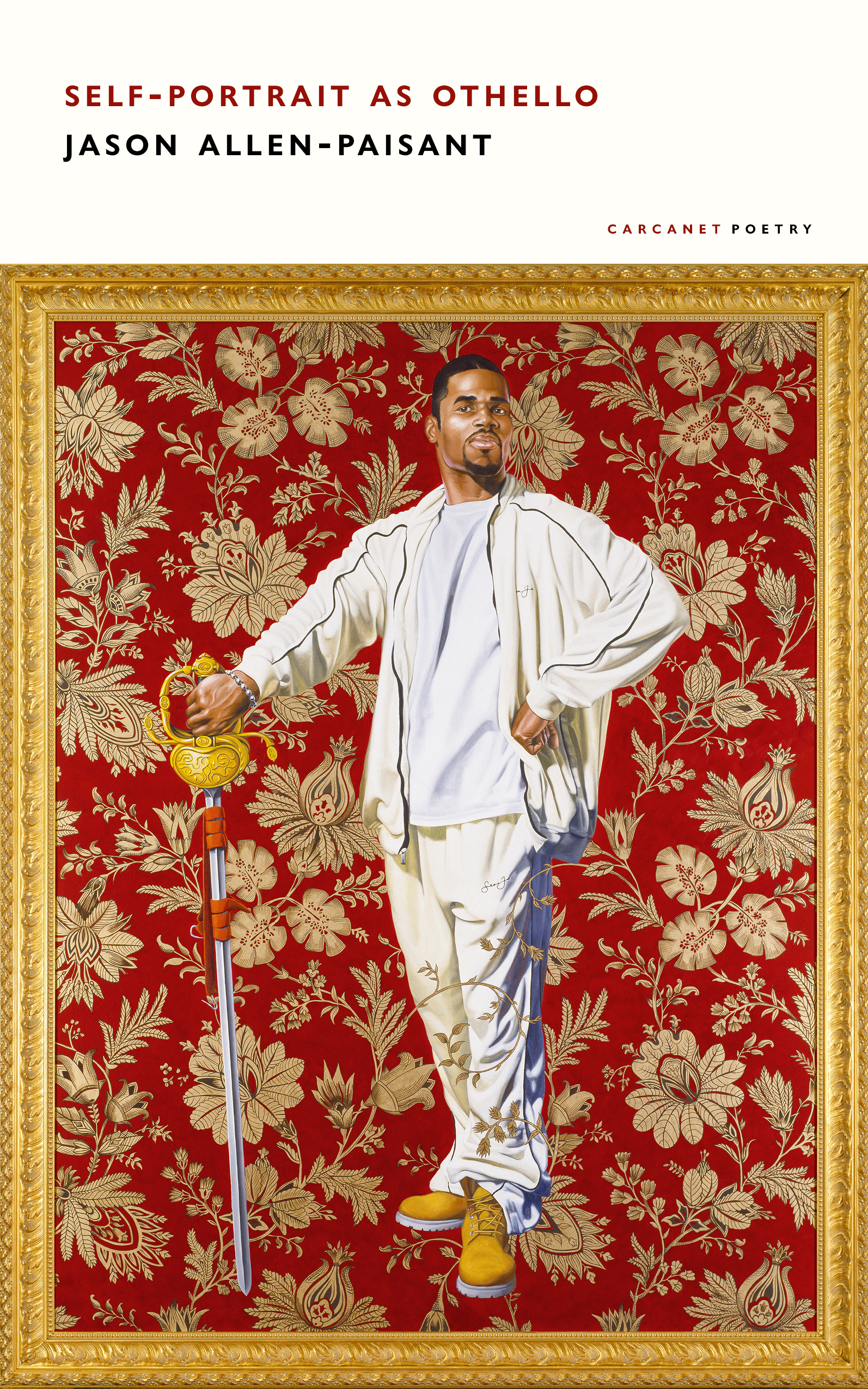Jamaican-born poet Jason Allen-Paisant was awarded both the 2023 Forward Prize and T.S. Eliot Prize for Self-Portrait as Othello (Carcanet, 2022).
Allen-Paisant is only the third poet to complete this double, following Sean O’Brien in 2007 (for The Drowned Book) and Nobel Laureate Seamus Heaney in 2010 (for Human Chain, his final collection).
Allen-Paisant is in good company!
The collection describes the persona’s journey from Jamaica to studying at the University of Oxford to visiting the Parisian École Normale Supérieure to visiting Prague and, finally, Venice. The last is especially important as the site of the first act of William Shakespeare’s Othello.
The latter gives Allen-Paisant’s persona a characterological cipher. Put more simply: the persona imagines himself as Othello, a ‘Moor’ who suffers racist abuse in Venetian society. A society in which he has nonetheless risen to the rank of general.
This Othello-cipher is Allen-Paisant’s main motif in the middle section of Self-Portrait as Othello—and I would argue that he employs it successfully.
Poetic space
But my main interest in this post is Allen-Paisant’s use of space on the page. In particular, the spaces he uses as ‘caesurae’—or ‘cuts’—in the middle of lines.1
A ‘caesura’ in poetry can come in different forms. A full-stop or punctuation mark in the middle of line ‘cuts’ the flow and creates a pause. A space on the page between lines and between words can achieve the same effect.
Allen-Paisant makes this a significant part of his poetics. For instance, between the fourth and fifth stanzas of ‘I’m going to Paris at last’ the stanza break is exploited for great effect. Whilst stanza breaks are always highlighted on the page, Allen-Paisant draws especial attention to it:
I take up my room at the École normale
I speak the language but the spacedon’t know my body
Jason Allen-Paisant, Self-Portrait as Othello (London: Carcanet, 2023), p. 22.
Here the ‘space’ becomes embodied on the page—and I use the word ’embody’ deliberately because this is about the persona’s actual, physical body that feels out of sorts.
By drawing attention to the trouble with space—that it’s ill-fitting or discomfiting—the poem makes a necessary part of poetry a theme of the poem itself. Space isn’t just there on the page, it is also there in the poem as a problem.
Tercet trouble
This is the first way in which the poems draw our attention to the thematisation of space. It also helps the reader to consider that other, larger theme of possessing an ill-fitting body or of standing out.
This is part of the problem that Othello faces in Shakespeare’s play, and it is what Allen-Paisant’s persona is also thinking about. In ‘The picture and the frame’ this is explained in a simple couplet. The ‘recognition’ here is the way his body registers a knowledge of being distrustful of police: ‘Eight years I’ve been trying to name this recognition / expressed in my flesh.’ (Allen-Paisant, p. 39)
These spaces become more traditional caesurae when they move to between the words (and not just between stanzas). There is also something interesting in the poems that are using set forms, such as the tercets—three-line stanzas—of ‘Self-portrait as Othello I’:
Undeterred by father’s anger
& disapproval
she thinks that weshould have every right
to be in love—
Venice aristocrat,African soldier.
Her belief,
this version of myself,a future
Allen-Paisant, p. 43.
for her and for me why should I
always fight?
These free-verse tercets—that have neither set rhythm nor rhyme—use traditional grammar spread over the three-line stanzas. Until, that is, line 11 where there is a small but noticeable gap between the words ‘me’ and ‘why’.
When I first read this, I wondered why this space was inserted rather than using a full-stop. Clearly, the poem is trying to suggest that this caesura is different from the grammatical niceties of one sentence ending and another beginning.
No: this is an interruption of the grammar.
And yet the tercet remains whole. There are still three lines in that stanza and the remaining two stanzas of the section also have three lines.
Rather than a caesura that breaks the poetic form entirely with this exasperating query—’why should I always fight?’—the caesura draws attention to the way that: (a) the tercet must be maintained; and (b) the tercet can’t contain the story of this Othello, who is nonetheless trying to fit in.
The caesura thus draws attention to the paradox of belonging in Othello and this collection.
Quatrains too
The same thing is shown in ‘Self-Portrait as Othello II’. This poem is written in four-line stanzas known as quatrains. In the second quatrain of that poem, we read:
New tongues
Allen-Paisant, p. 47
are something like trophies faccia faces façades …
The façade hides things you like this each new word
an erotic death your language grows with buried things.
There are two lines with caesurae in this stanza (lines 3 and 4). The phrases they bracket—’you like this’ and ‘your language grows with buried things’—both appear to be self-reflections, prompted by the learning of new languages. The phrases confirm the same points I made about tercets: the quatrain must remain, but the quatrain constrains.
In other words, the ‘you’ persona is allowed to intervene only by breaking or cutting up the poetry. Much like the ‘grow[ing] with buried things’ of the second caesura, the persona grows with the buried things that are poetically cut off, set apart.
Epigramming
The epigram for ‘Self-Portrait as Othello II’ reveals Allen-Paisant’s self-knowing interest in ‘space’. Taken from Dionne Brand’s A Map to the Door of No Return (2001), Allen-Paisant points out that ‘The Black body is signed as physically and psychically open space. […] There is a playing around in it’ (Brand in Allen-Paisant, p. 47).
But in these poems, the physically and psychically open space is transferred and translated from the body on to the page. The body is there, but in the spaces broken open in the poems themselves.
So the caesurae in Self-Portrait as Othello aren’t just breaks in the poetry. They also provide spaces for the persona to play in, to exploit, and to draw attention to the ‘battle for an ordinary’ that people of colour often fight.2
- The Princeton Encyclopaedia of Poetry and Poetics defines a caesura as follows: ‘A term that derives from the Lat. verb caedere , “to cut off,” and refers to the place in a line of verse where the metrical flow is temporarily “cut off.” […] Some critics use pause, rest, and caesura interchangeably.’ The plural of caesura is caesurae. ↩︎
- The phrase ‘battle for an ordinary’ is taken from Sara Ahmed, Living a Feminist Life (Duke University Press, 2017), p. 217. ↩︎


Leave a Reply